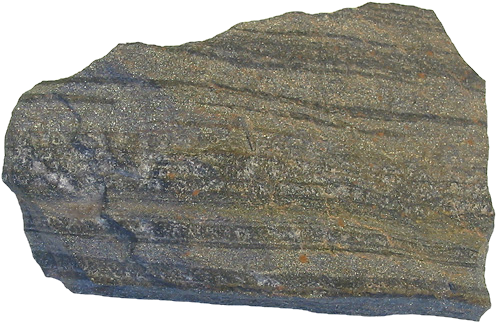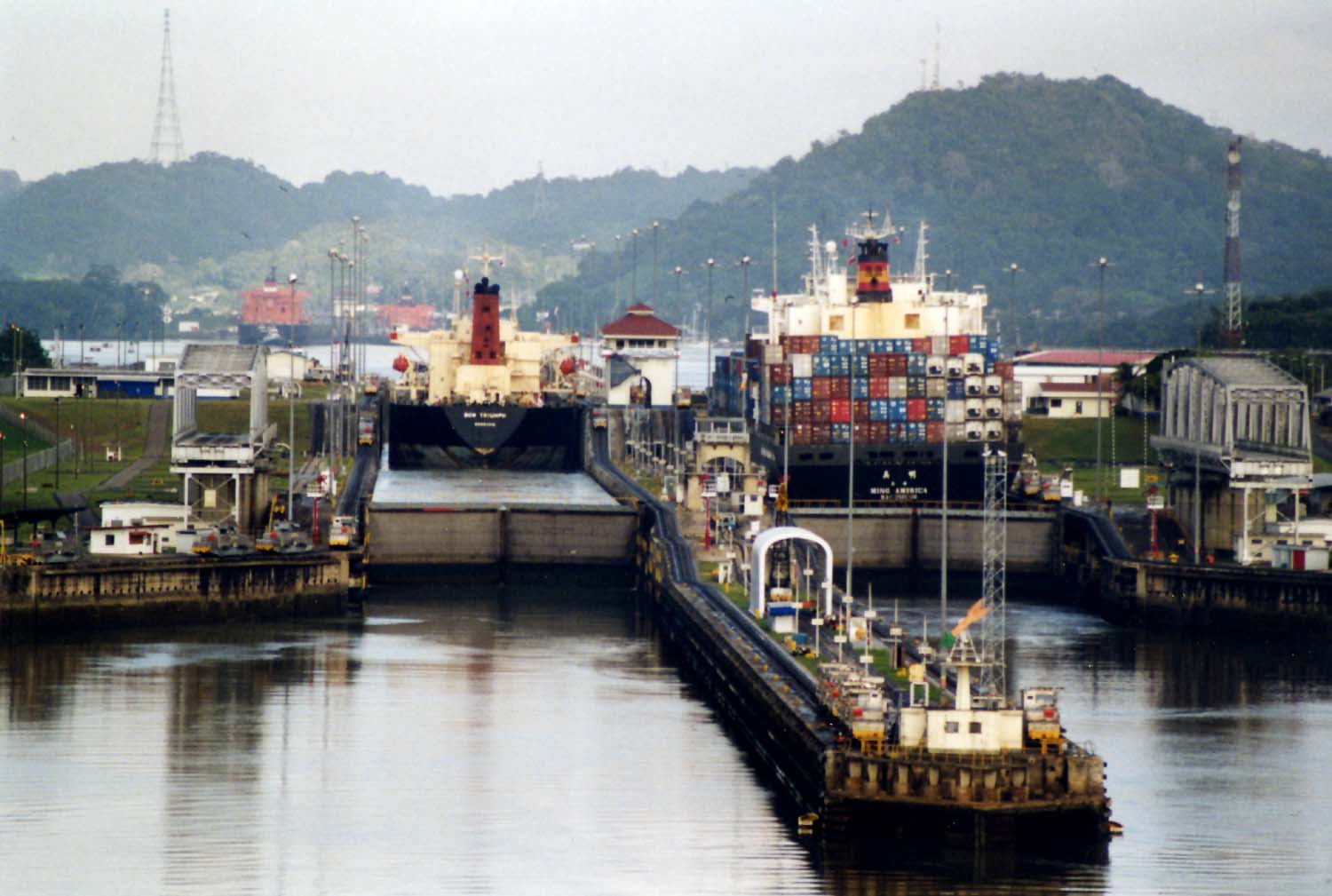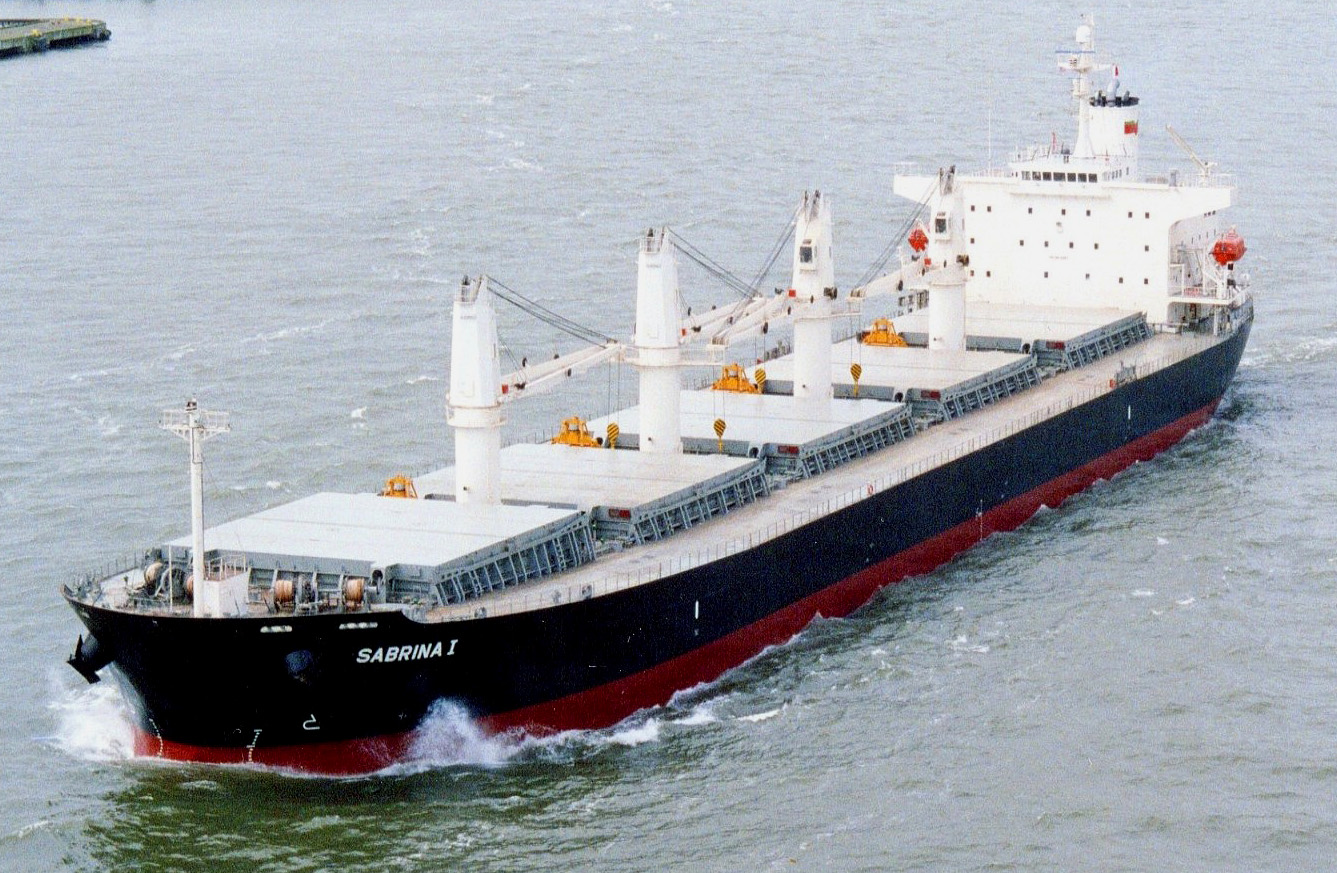|
Lanqiao
Lanqiao is a deep water port in Shandong, China, located south of Rizhao. Built between 2010 and 2016 by reclaiming land, Lanqiao is a prominent port for loading and discharging mineral ores and other bulk cargoes. It also has an oil terminal. Primarily catering to the iron and steel industry in China, the port became fully functional in 2014 and lies within the Lanshan administrative region, south of Rizhao port. The terminal and shiploaders were built by ZPMC and the port can handle Post Panamax bulk carriers of up to 205,000 deadweight tonnage Deadweight tonnage (also known as deadweight; abbreviated to DWT, D.W.T., d.w.t., or dwt) or tons deadweight (DWT) is a measure of how much weight a ship can carry. It is the sum of the weights of cargo, fuel, fresh water Fresh water or .... The port is equipped with grab ship unloaders, reclaimers, stackers, a train loader and belt conveyors. The entire bulk cargo terminal including the machinery as well as the water drainag ... [...More Info...] [...Related Items...] OR: [Wikipedia] [Google] [Baidu] |
Rizhao
Rizhao (), alternatively romanized as Jihchao, is a prefecture-level city in southeastern Shandong province, China. It is situated on the coastline along the Yellow Sea, and features a major seaport, the Port of Rizhao. It borders Qingdao to the northeast, Weifang to the north, Linyi to the west and southwest, and faces Korea and Japan across the Yellow Sea to the east. The name of the city literally means "sunshine". Worldwatch Institute. (2007). '' State of the World : Our Urban Future.'' The city is known for its sustainability, and it mandates solar-water heaters in all new buildings. Rizhao city was recognized by the United Nations as one of the most habitable cities in the world in 2009. The city population stands at 2,968,365 people as of the 2020 Chinese census, of whom 1,172,205 live in the urban area of Donggang District. Compared with the 2,801,013 people in 2010 Chinese census, there has been a total increase of 167,352 people in the past decade, an increase ... [...More Info...] [...Related Items...] OR: [Wikipedia] [Google] [Baidu] |
Shandong
Shandong is a coastal Provinces of China, province in East China. Shandong has played a major role in Chinese history since the beginning of Chinese civilization along the lower reaches of the Yellow River. It has served as a pivotal cultural and religious center for Taoism, Chinese Buddhism and Confucianism. Shandong's Mount Tai is the most revered mountain of Taoism and a site with one of the longest histories of continuous religious worship in the world. The Buddhist temples in the mountains south of the provincial capital of Jinan were once among the foremost Buddhist sites in China. The city of Qufu was the birthplace of Confucius, and later became the center of Confucianism. Shandong's location at the intersection of ancient and modern north–south and east–west trading routes has helped establish it as an economic center. After a period of political instability and economic hardship beginning in the late 19th century, Shandong has experienced rapid growth in recent de ... [...More Info...] [...Related Items...] OR: [Wikipedia] [Google] [Baidu] |
China
China, officially the People's Republic of China (PRC), is a country in East Asia. With population of China, a population exceeding 1.4 billion, it is the list of countries by population (United Nations), second-most populous country after India, representing 17.4% of the world population. China spans the equivalent of five time zones and Borders of China, borders fourteen countries by land across an area of nearly , making it the list of countries and dependencies by area, third-largest country by land area. The country is divided into 33 Province-level divisions of China, province-level divisions: 22 provinces of China, provinces, 5 autonomous regions of China, autonomous regions, 4 direct-administered municipalities of China, municipalities, and 2 semi-autonomous special administrative regions. Beijing is the country's capital, while Shanghai is List of cities in China by population, its most populous city by urban area and largest financial center. Considered one of six ... [...More Info...] [...Related Items...] OR: [Wikipedia] [Google] [Baidu] |
Land Reclamations Of China
Since 1949, China has carried out extensive land reclamation projects. It is among the countries which have built the most artificial land; from 1949 to 1990s, the total area of land reclaimed from the sea of China was about 13,000 km2. Mainland China A grand total of 150 km2 was planned to be reclaimed from the sea in 2009. Guangdong From June 2004 to the present, land reclamation is going on at Shantou. Project surface to reclaim is 146 km2. In 2020, Tencent announced its smart city-style urban development dubbed Net City, which will be built on reclaimed land in Shenzhen. Jiangsu Between 2009 and 2020, Jiangsu will reclaim 21 parcels of tidal areas along the southern Yellow Sea, yielding a total of 1,818 square km of new land. Liaoning Starting in March 2005, the Caofeidian Land Reclamation Project (曹妃甸围海造地工程) reclaimed a total of 310 km2 next to the island of Tangshan. The first stage of 12 km2 was finished on 28 March 2006. Th ... [...More Info...] [...Related Items...] OR: [Wikipedia] [Google] [Baidu] |
Mineral Ores
Ore is natural rock or sediment that contains one or more valuable minerals, typically including metals, concentrated above background levels, and that is economically viable to mine and process. The grade of ore refers to the concentration of the desired material it contains. The value of the metals or minerals a rock contains must be weighed against the cost of extraction to determine whether it is of sufficiently high grade to be worth mining and is therefore considered an ore. A complex ore is one containing more than one valuable mineral. Minerals of interest are generally oxides, sulfides, silicates, or native metals such as copper or gold. Ore bodies are formed by a variety of geological processes generally referred to as ore genesis and can be classified based on their deposit type. Ore is extracted from the earth through mining and treated or refined, often via smelting, to extract the valuable metals or minerals. Some ores, depending on their composition, may pose t ... [...More Info...] [...Related Items...] OR: [Wikipedia] [Google] [Baidu] |
Steel Industry In China
The steel industry of the People's Republic of China, initially small and hindered by war, expanded rapidly following market reforms in 1978, eventually becoming the world's largest producer. Despite this growth, the industry faced challenges with high debt, market volatility, and environmental pressures. Rising exports from 2023-2024 led to global oversupply, price drops, and tariffs, prompting China to halt new steel mill approvals and encourage overseas investments. China's central government has also worked to phase out unprofitable "zombie" companies while pushing for stricter environmental controls on steel production. History lang=en, upright=1.4, Steel production by countries. China became the world's largest steel producer in the late 1990s. 20th century From the early 1900s through both world wars, China's steel industry was small and sparsely populated. The industry's infrastructure which had relied on Soviet technology was mostly destroyed during the wars. The st ... [...More Info...] [...Related Items...] OR: [Wikipedia] [Google] [Baidu] |
ZPMC
Shanghai Zhenhua Heavy Industries Company Limited () is a Chinese state-owned engineering company and the world's largest manufacturer of cranes and large steel structures. In 2015 the company accounted for about 75% of the world-market share for container cranes. History The company was founded in 1992. It is a wholly-owned subsidiary of China Communications Construction Company. ZPMC is listed on the Shanghai Stock Exchange. It specializes in designing, manufacturing, erecting, commissioning, shipping in fully erected state, after-sales servicing and developing new port machinery products. Its main products include container cranes (QCs) (supplied eight for London Gateway), rubber-tyred gantry cranes (RTGs), bulk-material ship loaders and unloaders, bucket-wheel stackers and reclaimers, portal cranes, floating cranes engineering vessels and large steel bridge structures. Its cranes are found in 120 large ports around the globe. In 2009, the company rebranded itself as Shangh ... [...More Info...] [...Related Items...] OR: [Wikipedia] [Google] [Baidu] |
Panamax
Panamax and New Panamax (or Neopanamax) are terms for the size limits for ships traveling through the Panama Canal. The limits and requirements are published by the Panama Canal Authority (ACP) in a publication titled "Vessel Requirements". These requirements also describe topics like exceptional dry seasonal limits, propulsion, communications, and detailed ship design. The allowable size is limited by the width and length of the available lock chambers, by the depth of water in the canal, and by the height of the Bridge of the Americas since that bridge's construction, along with the clearance under the Atlantic and Centennial Bridges since their constructions in 2019 and 2004 respectively. These dimensions give clear parameters for ships destined to traverse the Panama Canal and have influenced the design of cargo ships, naval vessels, and passenger ships. Panamax specifications have been in effect since the opening of the canal in 1914. In 2009, the ACP published the ... [...More Info...] [...Related Items...] OR: [Wikipedia] [Google] [Baidu] |
Bulk Carriers
A bulk carrier or bulker is a merchant ship specially designed to transport unpackaged bulk cargo—such as grain, coal, ore, steel coils, and cement—in its cargo holds. Since the first specialized bulk carrier was built in 1852, economic forces have led to increased size and sophistication of these ships. Today's bulk carriers are specially designed to maximize capacity, safety, efficiency, and durability. Today, bulk carriers make up 21 percent of the world's merchant fleets, and they range in size from single-hold mini-bulk carriers to mammoth ore ships able to carry 400,000 metric tons of deadweight (DWT). A number of specialized designs exist: some can unload their own cargo, some depend on port facilities for unloading, and some even package the cargo as it is loaded. Over half of all bulk carriers have Greek, Japanese, or Chinese owners, and more than a quarter are registered in Panama. South Korea is the largest single builder of bulk carriers, and 82 percent o ... [...More Info...] [...Related Items...] OR: [Wikipedia] [Google] [Baidu] |
Deadweight Tonnage
Deadweight tonnage (also known as deadweight; abbreviated to DWT, D.W.T., d.w.t., or dwt) or tons deadweight (DWT) is a measure of how much weight a ship can carry. It is the sum of the weights of cargo, fuel, fresh water Fresh water or freshwater is any naturally occurring liquid or frozen water containing low concentrations of dissolved salt (chemistry), salts and other total dissolved solids. The term excludes seawater and brackish water, but it does include ..., ballast water, provisions, passengers, and crew. DWT is often used to specify a ship's maximum permissible deadweight (i.e. when it is fully loaded so that its Plimsoll line is at water level), although it may also denote the actual DWT of a ship not loaded to capacity. Definition Deadweight tonnage is a measure of a vessel's weight carrying capacity, not including the empty weight of the ship. It is distinct from the displacement (weight of water displaced), which includes the ship's own weight, or the ... [...More Info...] [...Related Items...] OR: [Wikipedia] [Google] [Baidu] |
Ports And Harbours Of China
Ports collections (or ports trees, or just ports) are the sets of makefiles and patches provided by the BSD-based operating systems, FreeBSD, NetBSD, and OpenBSD, as a simple method of installing software or creating binary packages. They are usually the base of a package management system, with ports handling package creation and additional tools managing package removal, upgrade, and other tasks. In addition to the BSDs, a few Linux distributions have implemented similar infrastructure, including Gentoo's Portage, Arch's Arch Build System (ABS), CRUX's Ports and Void Linux's Templates. The main advantage of the ports system when compared with a binary distribution model is that the installation can be tuned and optimized according to available resources. For example, the system administrator can easily install a 32 bit version of a package if the 64 bit version is not available or is not optimized for that machine. Conversely, the main disadvantage is compilation time, which c ... [...More Info...] [...Related Items...] OR: [Wikipedia] [Google] [Baidu] |






